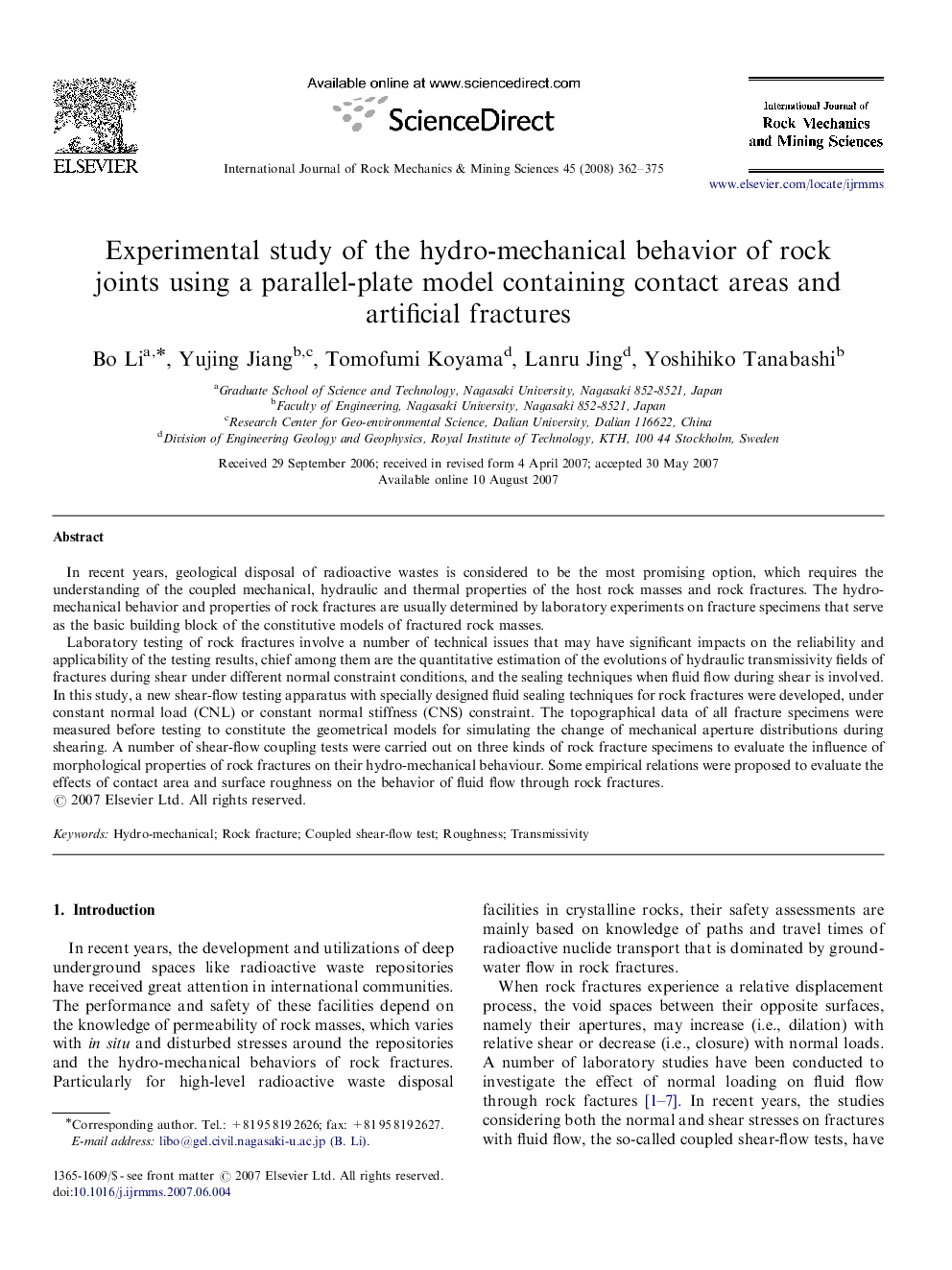| Article ID | Journal | Published Year | Pages | File Type |
|---|---|---|---|---|
| 810172 | International Journal of Rock Mechanics and Mining Sciences | 2008 | 14 Pages |
In recent years, geological disposal of radioactive wastes is considered to be the most promising option, which requires the understanding of the coupled mechanical, hydraulic and thermal properties of the host rock masses and rock fractures. The hydro-mechanical behavior and properties of rock fractures are usually determined by laboratory experiments on fracture specimens that serve as the basic building block of the constitutive models of fractured rock masses.Laboratory testing of rock fractures involve a number of technical issues that may have significant impacts on the reliability and applicability of the testing results, chief among them are the quantitative estimation of the evolutions of hydraulic transmissivity fields of fractures during shear under different normal constraint conditions, and the sealing techniques when fluid flow during shear is involved. In this study, a new shear-flow testing apparatus with specially designed fluid sealing techniques for rock fractures were developed, under constant normal load (CNL) or constant normal stiffness (CNS) constraint. The topographical data of all fracture specimens were measured before testing to constitute the geometrical models for simulating the change of mechanical aperture distributions during shearing. A number of shear-flow coupling tests were carried out on three kinds of rock fracture specimens to evaluate the influence of morphological properties of rock fractures on their hydro-mechanical behaviour. Some empirical relations were proposed to evaluate the effects of contact area and surface roughness on the behavior of fluid flow through rock fractures.
